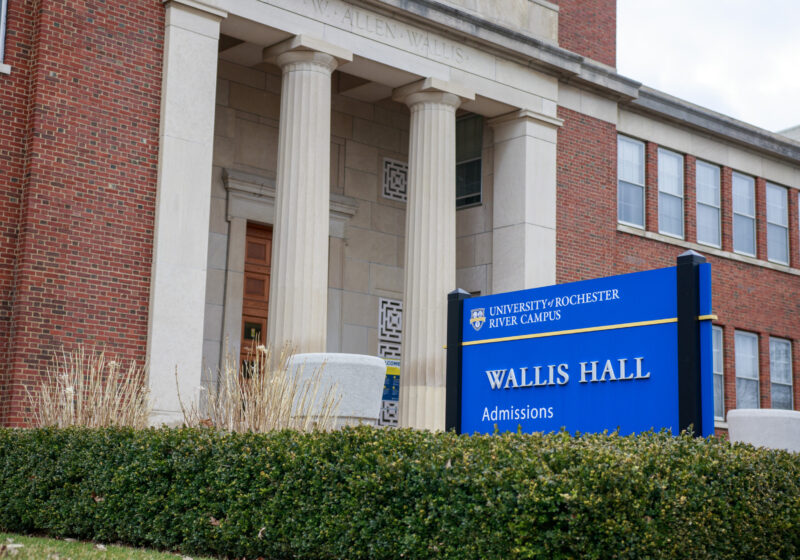On Tuesday, UR was awarded $1.8 million for the upcoming Nanosystems Initiative, through which the University will build a new center for research in optics and engineering. Meant to become a central point on campus for research across all of the sciences, the new building will hold state-of-the-art facilities equipped with materials that researchers at the University previously had to travel to other universities in order to use.
Nanotechnology is a field that spreads across a wide variety of sciences, including chemistry, physics and optics, as well as several fields of engineering, and is concerned with the management and organization of small particles, typically those less than one micrometer, or one millionth of a meter, in diameter.
“We have a number of faculty who have developed major innovations, but the innovations have to be refined and matured,” Dean of the School of Engineering and Applied Sciences Kevin Parker, Ph.D. said. “That’s the hold-up here. We don’t currently have enough equipment. People here have to travel all over the country. We want to enable a large number of faculty to do their work here.”
According to a statement made by Professor of Physics and Optics and senior scientist at the Laboratory for Laser Energetics Nicholas Bigelow, Ph.D. to the Rochester Business Journal, the goal is to create a space where research can be done more efficiently, and the advantage of having such a facility is that UR will now be able to conduct research at the level of other leading universities in science and technology such as Massachusetts Institute of Technology and Stanford University.
Bigelow also mentioned in his statement that nanotechnology teams will work on various projects in the new building, making advances more quickly than they were previously able to. The areas of study will include the use of fuel cells (energy conversion devices), finding new methods for diagnosing diseases, creating devices that can quickly scan people – passengers in airports, for example – to see if they are carrying viruses such as the bird flu and finding ways to reduce energy consumption in homes.
SUNY Albany, Cornell University and Rensselaer Polytechnic Institute already have similar nanotechnology centers, but Rochester’s will be unique because it will have the tools necessary to handle fuel cells in extremely high temperatures.
“Fuel cell materials have to work at high temperatures and high humidity. To do really good work, you need these conditions,” Parker said. This aspect of Rochester’s facility will give the University an advantage over the other three universities across the state with nanotechnology centers.
As part of the Nanosystems Initiative, the Wilmot building will be completely updated with new equipment, making it comparable to the new Robert B. Goergen Hall for Biomedical Engineering and Optics.
“[The school is] focusing on building on… strengths in optics and focusing on areas where we have people that can really make a difference,” UR President Joel Seligman said.
The center will be open to faculty, staff, students and members of the Rochester community. The University is already strong in its research for science and engineering and employs many faculty members across all fields of science and engineering who will take advantage of the new building.
The grant will help the greater Rochester community, too, as it will open up several job opportunities for the city. It will also attract scientists and engineers outside of Rochester who do not have similar facilities available to them elsewhere.
The plan for the new nanotechnology center was first proposed over a year ago, according to Parker, and construction of the facility will begin this summer. Parker guesses that the building will be completed sometime early in 2008.
This initiative alone will help the University advance greatly in its research in science and engineering, and “there’s a lot [more] coming down the line,” Seligman said.
Lombardo is a member of the class of 2010.





